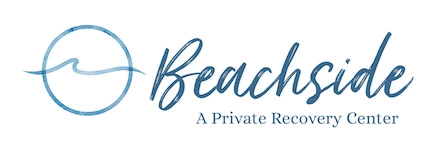
When you make the decision to come into detox treatment, you’ve already taken the most important step towards sobriety. But now that you’ve started, what can you expect? What is the next step exactly? Two of our staff members are here to go through this process with you and explain what happens after detox.
Talking About Recovery During Detox
When you enter detox treatment, we’ll discuss with you how we can provide guidance and comfort during the detox process. We’ll also form an individualized plan for you to move forward with your recovery after detox.
“This is a valuable time to begin aftercare planning, Beachside’s Chief Clinical Officer Tabitha Grant says. “During intake, most patients know exactly where and what they cannot go back to stay sober. They also know who they dream of being, emotionally and physically.”
“It’s at this pivotal moment that our staff begins discharge treatment planning. We know the physical and emotional pains of detoxing will shortly begin, and patients tend to compromise their original aftercare plans for whatever option is quickest and easiest,” Grant says.
“It can be difficult when patients are at the detox level because this is often a time where they’re still experiencing withdrawal symptoms. The main focus at this time is to keep you as comfortable as possible.” Beachside’s Clinical Director Stacey Howe says.
Deciding If Aftercare Is Right for You
Once withdrawal symptoms subside, it’s time to discuss further treatment — if it hasn’t been decided already.
The staff at Beachside will help you meet with a therapist to start building a relationship and start diving deeper into what caused your addiction.
“Our therapists begin recording initial information by asking questions such as, ‘What brought you to treatment?’ and ‘What are your expectations?’” Beachside’s Clinical Director Stacey Howe says.
“This is also the time when we will make contact with your initial family, and communication can be made between the therapist and a family member. This is helpful because family members can provide input as to what they feel the patient’s aftercare plan should include.”
Rehabilitation Programs Right After Detox
This next step into aftercare works best when it’s provided the moment you’re finished with detox and are ready for treatment. The earlier we can help provide treatment, the faster recovery will be.
“We start identifying treatment goals once they start to feel better and the symptoms of withdrawal begin to subside,” Howe says. “This is often during their residential level of care, which could be considered a stabilization period where they are no longer receiving a medical detox, but aren’t yet quite ready to transition to the outpatient level of care.”

Transitioning to Residential Care
Residential treatment is the next essential phase of the treatment process. While detox focuses on the physical recovery of the body, residential care focuses on the emotional aspect of addiction.
“During residential treatment, patients can start delving into underlying issues, but with the support of 24/7 medical and clinical staff, Grant explains.”
Transferring to residential care happens naturally because patients are finished with the physical detox and are starting to look towards the future. We will guide you through the entire process and get you settled into our inpatient residential program. Here you will carry out your treatment plan and take advantage of the amenities and therapeutic activities at our Hutchinson Island location.
By learning new behaviors and ways of thinking during your program, we can help arm you with confidence and motivation to stay sober.
Telehealth Services
Beachside Rehab offers enhanced virtual individual and group therapy to existing, previous, and new clients. Rest assured if you can’t continue support in person, we can help you connect with therapists and groups online with video conferencing. We are here to provide expert treatment and compassionate care to help you on your healing journey no matter your situation.
Inpatient Vs. Outpatient Rehab
Inpatient Rehab refers to residential levels of care where patients reside and participate in treatment in the same facility. The facility provides 24/7 medical and clinical care. Outpatient Rehab refers to the lower levels of care where patients continue treatment after they’ve completed residential treatment. During this time, most patients reside in community housing and sober living homes, then participate in treatment at the clinical facility. The outpatient treatment continuum begins with a Partial Hospital Program (PHP), then the Intensive Outpatient Program (IOP), and finally Outpatient (OP) care.
“The majority of patients transition to PHPs after inpatient care, since it’s the clinically recommended continuum of care for most people,” Howe explains. “Once you’re at PHP, you’ll work with your therapist, case manager, and discharge planner to identify, discuss, and solidify your outpatient plan.”
A lot goes into our process of healing at Beachside, and we back up our decisions with the American Society of Addiction Medicine.
“What level of care a patient is in and how long they stay in each level of care is determined by myself and our Medical Director utilizing The American Society of Addiction Medicine (ASAM) criteria” states Grant. Every patient is unique. That’s why we utilize a proven national tool to verify each patient is placed in the appropriate level of care.”
Ready to Talk to Us?
Detoxing from your physical addiction is only one of many components throughout recovery. There are many options available to you after detox at Beachside Rehab, and we make it our goal to help you have the tools and confidence to conquer addiction and stay sober for the rest of your life.
Contact one of our admissions counselors today to get started. We’re here for you.
